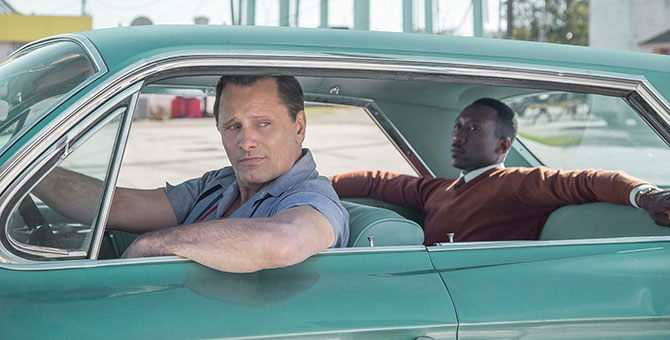While Peter Farrelly’s Oscar-winning Green Book starring Viggo Mortensen and Mahershala Ali was named after the guide that help African-American travellers navigate the country in its segregation era, the titular book is only briefly mentioned in the movie. Inspired by a true story, the film depicts classical and jazz pianist Don Shirley (Ali) and driver/bodyguard Tony Vallelonga (Mortensen) on the former’s eight-week concert tour through the racially segregated Mid-West and Deep South. It celebrates the friendship between two men of different race and socioeconomic standing, and brings attention to the danger of racial tensions and discrimination of the time, but sheds little light on the historic resource. Then again, if one were to delve into the history and significance of The Negro Motorist Green Book, we reckon it’ll take a whole other movie to do it justice.
So who published then Green Book, and how important was it to the black community at the time?
Think back to the time where racial segregation was still in force in the U.S.—by law in the South and often by practice in the other states. It was also an era where more Americans were going on road trips and holidays across the country as it became increasingly connected through interstate highways. Perhaps the most iconic of them all was Route 66, which ran from Chicago, Illinois to Los Angeles County, California, crossing eight states and three time zones. In 1930, 44 out of the 89 counties lining Route 66 were “Sundown Towns”—all-white communities that banned black people from entering the city limits after dark. Some had signs that read: “Nigger, don’t let the sun go down on you in our town”.
Black travellers weren’t just turned away from most white-owned businesses, they risked facing violence on their journeys. Bear in mind that this was a time where the horrible act of lynching was not uncommon, particularly in the South. To avoid racial humiliation and terrorism, African-Americans often travelled with portable toilets, prepared food, extra gallons of gas, and bedding.
The first edition of The Negro Motorist Green Book was published in 1936 by Victor Hugo Green, an African American postal worker-turned-travel agent from Harlem. Initially a New York-focussed guidebook listing businesses black residents of the city could frequent without facing discrimination, its popularity and demand for a more geographically expansive guide was followed with a national issue the next year. The Green Book featured restaurants, hotels, vacation destinations, barber shops, beauty salons, gas stations and even real-estate offices that were open to black travellers. It soon became an invaluable resource for African-Americans living in and travelling across the country.
An innovative response to white-supremacist discrimination, the Green Book was also seen as a community-building tool, acknowledging and encouraging black-owned businesses. It even started to attract interest from white businesses that looked to tap into the potential sales of the black market. A note in the 1955 edition read: A few years after its publication … white business has also recognised its [The Green Book’s] value and it is now in use by the Esso Standard Oil Co., The American Automobile Assn. and its affiliate automobile clubs throughout the country, other automobile clubs, air lines, travel bureaus, travellers aid, libraries and thousands of subscribers.
Green passed away in 1960, but the publication continued with his widow Alma as the editor. The late ’50s and early ’60s saw African-American civil rights activism begin to take effect, resulting in less racial segregation in public facilities, and the eventual enforcement of the landmark Civil Rights Acts of 1964. It marked the beginning of the Green Book‘s obsolescence—the goal that was noted by Green in his introduction to the first edition—and the guide’s final edition was published in 1966.
Wondering what the Green Book looked like? The Schomburg Center for Research in Black Culture has published digitised copies of 21 issues of the guidebook, which can be accessed here.
| SHARE THE STORY | |
| Explore More |




